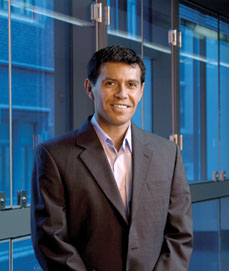Science researchers at the University of Pennsylvania conducted a study that may help them reach a better understanding of health conditions such as arteriosclerosis, aneurysms and thrombosis. The results of the study are making the news as one of a number of compelling current science events at the University of Pennsylvania. According to science researchers, blood plasma is thicker and more elastic than water. Depending on how much pressure blood plasma is under, it flows differently under different circumstances, meaning that blood plasma influences how blood flows more concretely than scientists thought in the past.
“Nobody thought plasma could be a complex fluid,” said Professor Paulo Arratia of the University of Pennsylvania’s School of Engineering and Applied Science’s Department of Mechanical Engineering and Applied Mechanics. “We thought it just behaved like water because, for the most part, it does. But plasma has its own proteins in it — beyond the red blood cells, white blood cells and platelets in whole blood — that are biopolymer molecules. And we thought, every time you have molecules like that, you end up with a non-Newtonian fluid.”

Professor Paulo Arratia
Image courtesy of the University of Pennsylvania
According to an article on the University of Pennsylvania’s news page, Arratia, along with graduate students Lichao Pan and Mike Garcia, created a microfluidic system that helped them research how blood plasma flows in a way similar to its role in the vascular system. Their studies demonstrated that blood plasma behaves much differently than water when it flows, and notably, blood plasma shows a considerably higher level of flow resistance.
A number of groundbreaking current science events take place at the University of Pennsylvania every year thanks to its wealth of funding. This blood plasma study in particular received funding from the NSF through its Chemical, Bioengineering, Environmental and Transport Systems program. The NSF provided $32 million of research funding to the University of Pennsylvania in 2012. Of that funding, $2 million went towards life science research alone. In addition to receiving NSF funding, the University of Pennsylvania also received $455 million in research funding from the NIH in 2012. For the convenience of our readers, we have composed a list of the different departments receiving research funding, how many projects were awarded funding in those departments, and the amount of funding received.
- Anatomy/Cell Biology – 40 awards, $13.3 million
- Biochemistry – 23 awards, $6.5 million
- Biology – 37 awards, $11 million
- Biomedical Engineering – 12 awards, $4.7 million
- Biostatistics – 40 awards, $13.5 million
- Chemistry – 20 awards, $6.5 million
- Internal Medicine – 251 awards, $128.7 million
- Microbiology – 47 awards, $17.6 million
- Veterinary Sciences – 25 awards, $7.7 million

The University of Pennsylvania
Image courtesy of Jeffrey M. Vinocur and Wikimedia Commons
The NIH ranked the University of Pennsylvania third in direct plus indirect costs of life science expenditures, excluding R&D contracts and ARRA awards, in 2011. The University of Pennsylvania also received $25.5 million in research funding for the Abramson Cancer Center, and having received $26 million for stem cell research, they were the second highest funded university in the country for NIH stem cell research funding from 2010- 2011.
If you are a lab supplier or biotechnology vendor interested in meeting science researchers, learning about more current science events and getting to know the well-funded market at the University of Pennsylvania, Biotechnology Calendar, Inc. invites you to attend our annual trade show at the University of Pennsylvania. The Philadelphia BioResearch Product Faire™ Event will be held on May 16, 2013 and is situated on the University of Pennsylvania campus. Biotechnology Calendar, Inc. is a full-service science research marketing and event-planning company that runs trade shows at top research institutions across the country. If you are interested in attending a trade show closer to home, we encourage you to check out our 2013 calendar of events. For more funding information on the University of Pennsylvania, click on the button below.


